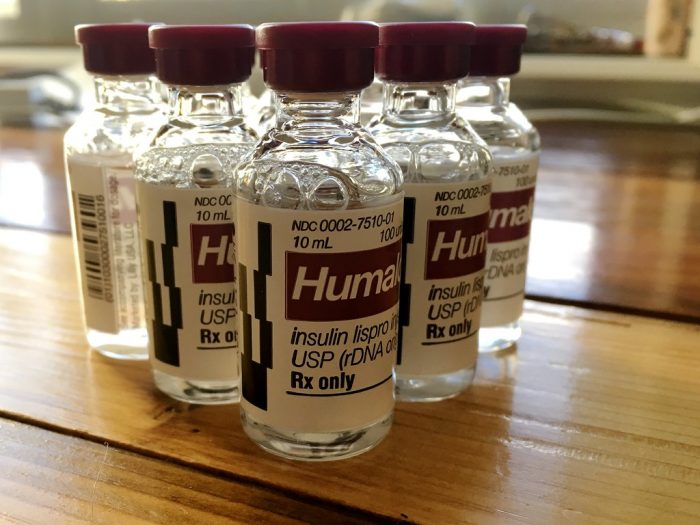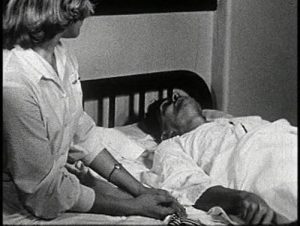Modern (1940’s-present)
32
Oscar Haney
INTRODUCTION
There have been many negative ailments that have plagued society since the beginning of time. From smallpox, measles, the bubonic plague, and even HIV, these ailments have negatively impacted society and the way people live their lives. One of the most well-known chronic diseases is diabetes. There are many forms of diabetes, but the most common ones are Type One and Type Two. Diabetes is caused by an imbalance in blood sugar that produces negative effects on the host. “Approximately 100 million people around the world need insulin, including all the people suffering from Type 1 diabetes and between 10-25% of people with Type 2 diabetes.” ( Global Human Insulin, 2019). Even though this disease can be fatal, the innovations made to treat it have dramatically changed that. In the year 1920, three scientists, Fredrick Banting, Charles Best, and John Macelod made incremental discoveries on how to treat diabetes. After the first trials on animals, they decided to try the product on the first human patient, a fourteen-year-old boy by the name of Leonard Thompson who was near death from the disease. After the successful treatment, they were able to make changes in the administration of the product in order for it to become more effective. Nonetheless, this discovery has greatly impacted society for the better. The developments of insulin and human treatment have greatly impacted society with regards to technological innovation, the U.S. economy, and political policies.
THE DEVELOPMENT OF INSULIN

In the 1920’s, the discovery of insulin was a breakthrough in science that would change the world forever. Dr. Fredrick Banting, John Macelod, and Charles Best were the first scientists to understand the process of extracting islet cells and use them to combat blood sugar levels. These scientist began to correlate urine with the levels of blood sugar of an individual. Before this, other scientists and physiologists tried to come up with a conclusion about what was actually causing the spike in blood sugar. Physiologist Edward Albert Sharpey-Schaefer was instrumental in the late 1800’s when he was trying to understand the reasoning behind diabetes. He was the “first physiologist to suggest that the pancreatic islets, or the islets of Langerhans, might be driving the effects of the pancreas on blood sugar control…” (Felman, 2018). The steps being taken by these early scientists were imperative in order to develop what the world now knows as insulin. The scientist discovered that by tying up the ducts of the pancreas of dogs, deriving the islet cells from the pancreas, then injecting the islet cells into a dog, it lowered the blood sugar levels. The way they figured this out is that they extracted the pancreatic islet cells of dogs and observed the anatomy and physiology within it.

The scientist saw that the islet cells of the pancreas were the cause of diabetes because they remained functioning even when the pancreas of different animals would be ligated. With that scientific discovery, Fredrick Banting and his assistants, Charles Best and John MaceLod, came together in order to further develop the product known as insulin. This team of scientists further developed the product of insulin by testing more of dog’s pancreases and analyzing the islet cells that remained intact. This eventually led to the first test of the product on the first patient, Leonard Thompson.
THE FIRST HUMAN TO BE TESTED
Leonard Thompson was a fourteen-year-old boy who was diagnosed with severe diabetes. During the time period were there were no forms of treatment for diabetes other than a restricted diet, people who were diagnosed with diabetes were not expected to live long at all. An article by Bridgette Montgomery stated, “Before the discovery of insulin, this was the very fate for patients young and old diagnosed with this deadly disease. Adults typically lived under two years, while children rarely lived longer than one years’ time. They suffered greatly with blindness, loss of limbs, stroke, heart attacks, kidney failure and eventually death. (Montgomery, 2018)” However, insulin would revolutionize this and change the world for diabetic patients. There were multiple trials that went into administering the product.

At first, the scientist realized that the amount of dosage being administered was not enough and deemed it “impure”, but it did make the blood sugar levels drop only by a minute amount. (Macfarlane, 2012) They recognized that the substance needed to be more diluted and purified so when that was done, they administered it with more dosage and that helped drop the blood sugar levels significantly, ultimately saving his life. (Macfarlane, 2012) Leonard Thompson became the first human patient to be successfully treated for diabetes. Macelod and the other scientist reached a milestone after this trial run. One of the largest epidemics in the world was now about to be ceased because of Leonard Thompson, he was able to live for another thirteen years after the trials. (History, n.d.) After him, they then trialed the product again with six more patients and with each patient there was a new innovation. The new ideas and innovations that occurred were things such as proper dosage, tools, where to insert the needles, and effective non-medical treatments that could be administered to the patients. This discovery was incredible, but the obstacle they faced after that period was learning how they could produce this product on a larger scale in order to benefit more of society.
THE IMPACT ON SOCIETY
The societal impact of insulin was astounding. The mortality rate in the world decreased because people were now able to live long, healthy, and normal lives due to insulin treatments. Even the way it was being administered changed the way of life for people. From huge needles and painful injection, insulin can now be injected by using the technological innovation of the insulin pen.

For example, the stories shared by people who were diagnosed in the 1920’s around the time of discovery really shows how much this product effected society. Christine Turner was diagnosed with diabetes as a toddler, during the discovery of insulin. She describes the treatments she went through when she was being administered the medicine. The article, Insulin: The Canadian Discovery that Has Saved Millions of Lives, states, “After her diagnosis, her parents had to pin her down to give her injections and strictly monitor her diet.” (Globe, 2018) Now, Mrs. Turner uses an insulin pump instead of the traditional injection needles. The insulin pump makes administration more painless, feasible, and convenient. (Globe, 2018) Turner’s story shows just how difficult it was to administer the drug as well as keep up with precautionary measures to combat the disease. Since then, the sources of administration of insulin and the treatment of diabetes have been innovated to make it easier and more efficient. Jason Turner, husband of Christine Turner, also was diagnosed with Type 1 diabetes but unlike Mrs. Turner, it was later in his life. His symptoms were so severe that the researchers allowed him to be accepted into the test trial for islet cell transplants. He underwent three islet cell transplants. They found major success with these transplants because they began to work as soon as they were injected, and they kept blood sugar levels at a stable place for a long period of time. After his third and final transplant, Mr. Turner required little to no insulin because of how effective this treatment was. (Globe, 2018) Dr. Sharpiro, a scientist who helped with islet transplants, stated, “An islet cell transplant cures diabetes, but does not end the need for treatment or anti-rejection drugs.” (Globe, 2018) Their story is a reflection of how insulin has effected society and how it has developed over the years. These innovations and technology are imperative to science and technology in society because they created a lasting impact for people around the world. People who have been diagnosed with diabetes are now able to live healthy and normal lives. While insulin directly impacted the way of life for people, it also made an impact economically.
INSULIN AND THE ECONOMY
Since the start of insulin being produced, with such high demand, it is evident that the price of it will correlate with that demand. People all over the world are diagnosed with diabetes everyday but it does not necessarily mean that they will be able to receive treatment for it. Treatment is highly dependent on the country that a person resides in because of different policies of healthcare. As previously stated, insulin administration methods have been innovated in order to make the process easier. With this innovation comes a cost. The old methods of administration such as use of thick needles, though outdated, are still an option for insulin receiving patients. According to the Clinical Diabetes Journal, it is stated that, “In most cases, the cost equivalent amounts of insulin, in terms of units of insulin, is at least 50% higher and more often more than 200% higher for the new insulin products and devices than for conventional preparations in vials. (Leitcher, 2003)“In most cases, the cost of equivalent amounts of insulin, in terms of units of insulin, is at least 50% higher and more often more than 200% higher for the new insulin products and devices than for conventional preparations in vials.” (Leicther, 2003).” A person can receive more insulin with the pen than they would in a vial however, the price difference is astronomical. When taking a look at how these prices effect the economy, it is evident that the insulin market is contributing a great amount of money to the economy specifically, the US economy. Some insulin manufacturers such as Eli Lily, Novo Nordisk, and Sanofi are all major producers who are driving the growth in the insulin market.
The insulin market is growing exponentially, the Human Insulin Market projects the forecast for revenue for insulin will reach 25.7 billion US dollars by the end of 2019. (Global Human Insulin Market, 2019) These facts coincide with the health of Americans. Obesity is on the rise in the US with a myriad of fast food chains and other unhealthy food practices. (Blumenthol, 2018) If these bad habits continue to spread in America, more people will possibly be diagnosed with diabetes and will then have to seek insulin treatment. With all of the money coming from the insulin market, one could imagine how this effects the politics.
the political impact of insulin
The continuous rising prices in insulin are causing great concern in society, but more specifically, in American society. There have been numerous cases of diabetic patients losing their lives due to the lack of affordability of insulin. The insulin market is driven by private investors and manufactures. There has been no bipartisanship between the US Government and the private insulin markets, which is why there has been such an increase in the prices of insulin. (Pear,2019) In April 2019, there was an executive pharmaceutical industry meeting with the U.S. Congress, and the meeting ended with representatives of the congress vowing to make a change to the insulin price scheme. Insulin manufacturing company executives simply stated that the reason they cannot decrease the prices of insulin is because of other obligations to suppliers. (Pear, 2019) This is showing that the value of insulin is greater than that of the human life, which is a negative impact that this product is creating. This is also showing a problem with the U.S. healthcare system. Despite this being a concern for the past couple of decades, there still has not been anything done to alleviate this problem. While insulin has proven to be a useful innovation that benefits many people, many others who need it simply cannot afford it.
CONCLUSION
The groundbreaking discovery of insulin is something that will always be a part of society. The first patient to be treated with insulin, Leonard Thompson, dramatically changed the way of life for diabetic patients and made a major impact on society. From using animal cells to now using human islet cells and stem cells, insulin is now a revolutionary product that saves the lives of people every day. The scientists behind the discovery of insulin have made a lasting impact on society. Insulin has caused great growth in the economy, bettered the lives of humans, and revolutionized much of the medical technology that is used today. Even though this product was created to benefit the people, it also has some negative impacts as well. With that said, when discussing insulin and its relationship to economics, one must take into account that economies vary with their respective country and that country’s healthcare policies. In Canada, where it was discovered, the prices for the treatment are relatively inexpensive. Due to the increasing cost of insulin due to price gouging by these private drug manufacturing corporations, diabetic patients with little financial resources are not able to be treated properly. This price gouging is detrimental because it could cause people to lose their lives over lack of affordable insulin. Health should be the number one priority for all humans and they should not have to reprioritize their well being due to financial problems. There needs to be more direct and effective action taken to combat the current healthcare system in the U.S. so that the people who are not able to afford insulin can still be properly treated for diabetes. No human life is worth the value of the dollar.
Chapter Questions
- Short Answer: In what ways did Leonard Thompson play a role in the innovation of the administration of insulin?
- Short Answer: How did insulin play a role in the 20th century and how did it specifically effect diabetic patients?
- True/False: After being diagnosed with diabetes, children were usually expected to live up to ten years after.
References
Blumenthol, D. (2018, April 24). Rising obesity in the U.S. is a public health crisis. Retrieved from https://www.commonwealthfund.org/blog/2018/rising-obesity-united-states-public-health-crisis
Felman, A. (2018, November 22). Who discovered insulin? Retrieved from https://www.medicalnewstoday.com/articles/323774.php
Globe, M. S. T. (2018, February 26). Insulin: The Canadian discovery that has saved millions of lives. Retrieved from https://www.theglobeandmail.com/news/national/canada-150/insulin-the-canadian-discovery-that-has-saved-millions-of-lives/article35537847/
Global Human Insulin Drug Market. (n.d.). Global human insulin drugs market – growth, trends, and forecast (2019-2024). Retrieved from https://www.mordorintelligence.com/industry-reports/insulin-market
Hill, R., Simoni, R., & Vaughn, M. (2002, June 28). The discovery of insulin: the work of Fredrick Banting and Charles Best. The preparation of insulin, 57, 709-723. Retrieved from http://www.jbc.org/content/277/26/e15
History of Insulin (n.d.). Retrieved from https://www.diabetes.co.uk/insulin/history-of-insulin.html
Leitcher, B. (2003, Jan 21). The business of insulin: A relationship between innovation and economics. Clinical Diabetes, 1, 40-42; DOI: 10.2337/diaclin.21.1.40
Macfarlane, R. (2012, May 1). The discovery of insulin. Retrieved from http://blog.wellcomelibrary.org/2012/01/the-discovery-of-insulin/
Montgomery, B. (2018, September 4). Diabetes before and after. Retrieved from https://www.thediabetescouncil.com/diabetes-before-and-after/
National Institute of Diabetes and Digestive and Kidney Diseases. (2018, May 1). Insulin Resistance & Prediabetes. Retrieved from https://www.niddk.nih.gov/health-information/diabetes/overview/what-is-diabetes/prediabetes-insulin-resistance.
Pear, R. (2019, April 10). Lawmakers in both parties vow to rein in insulin costs. Retrieved from https://www.nytimes.com/2019/04/10/us/politics/insulin-prices-legislation.html
Rosenfeld, L. (2002, December 1). Insulin: discovery and controversy. Retrieved from http://clinchem.aaccjnls.org/content/48/12/2270.
WebMD. (n.d.). The facts about insulin and diabetes. Retrieved from https://www.webmd.com/diabetes/guide/overview#1.
images
“This image is taken from Page 32 of Carbohydrate metabolism and insulin” by Medical Heritage Library, Inc. is licensed under CC BY-NC-SA 2.0
“2019/265/3 Three Months of Life in Nine Bottles” by cogdogblog is licensed under CC0 1.0
“34 Insulin Shock Is A Common Treatement” by mentalnurse is licensed under CC BY-NC-SA 2.0
“PEQPEN _ insulin pen” by Filipe Cabaças is licensed under CC BY-NC-ND 4.0
